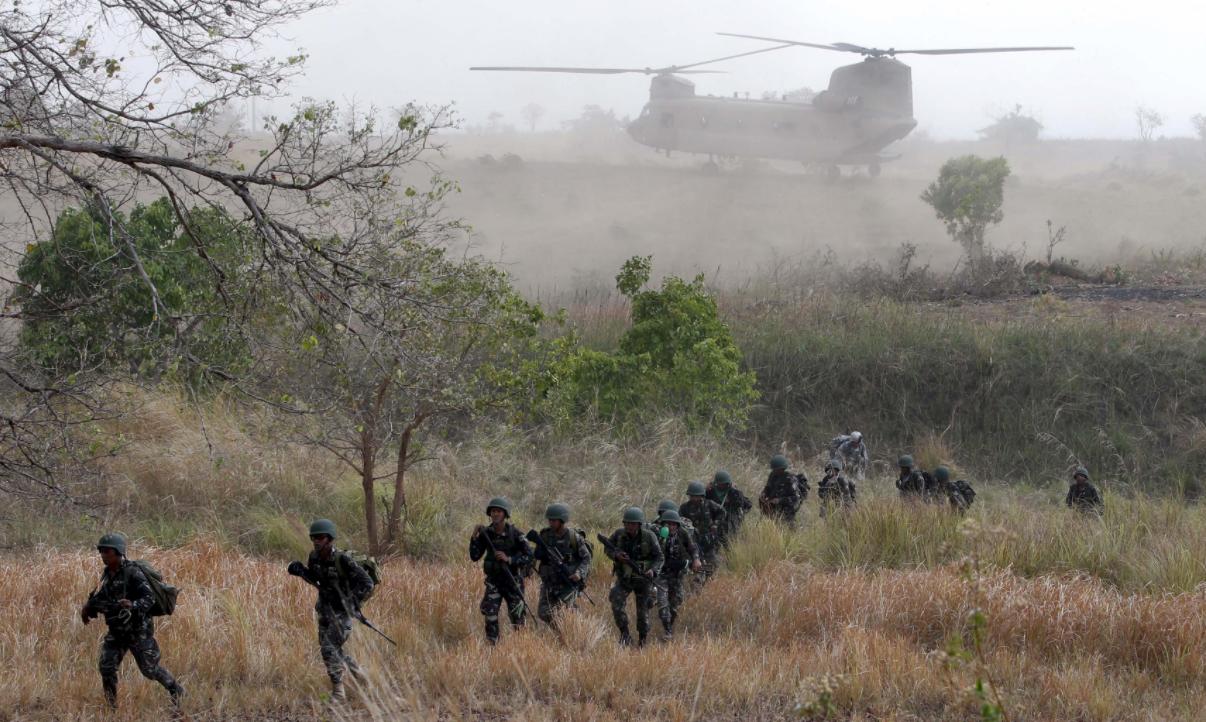By Ling Yunzhi

The Philippine Defense Ministry recently announced that the US will build five military sites in the country according to the Enhanced Defense Cooperation Agreement (EDCA) in response to "current security challenges", and will spend 66.5 million US dollars over the next two years on the construction projects at another three sites, news came from foreign media.
The US-Philippines military alliance in recent years has been quite complicated, even showing a major rift during Rodrigo Duterte's time. But after Ferdinand Marcos Jr. came into power, he, considering the Philippines' strategic needs, attached more importance to America's influence in Southeast Asia and had frequent interactions with it in the military domain. America's plan to build five new military sites in the country is a sign of the warming-up of bilateral military ties, which, though likely to encounter obstacles in implementation, will nevertheless further deepen the alliance and make a major difference in the regional security situation.
US-Philippines defense cooperation will advance America's "Indo-Pacific strategy".
The US and the Philippines have not abolished their Mutual Defense Treaty (MDT) signed in 1951 without an expiration date, which indicates how firm their alliance is. For America, the Philippines commands a vital geographical position at the key channel between the Indian Ocean and the Pacific Ocean. This, coupled with the Clark Air Base and the Naval Base Subic Bay that the US military has been running for decades, has made it a key pivot of America's "Indo-Pacific strategy".
The first "Indo-Pacific Strategy Report" released during Biden's term on February 11, 2021, highlighted how much importance Washington attached to the Indo-Pacific region and how it saw Southeast Asia as a key region as well. The Philippines' strategic position has been constantly raised against such a strategic background and policy demand. In October of that year, the commander of US Indo-Pacific Command Admiral John Aquilino said the US and the Philippines would resume their joint military exercises to the original scale in 2022. In March this year, the two sides assigned about 8,900 troops to the 2022 "Balikatan" (shoulder-to-shoulder) exercises, the biggest since 2015 with the most subjects updated as well.
When US Secretary of State Blinken made his Southeast Asian tour in August 2022, he reaffirmed America's commitment to the 1951 MDT during his Philippine visit. Recently the US Defense Security Cooperation Agency announced an almost 2.9-billion-USD arms deal with the Philippines. Washington also plans to enhance Manila's capacity building for maritime posture perception and provide solid intelligence support for its military activities in the South China Sea.
The plan to build new military bases in the Philippines is a step taken by the US to advance bilateral defense relations. Going forward, it will also heighten Manila's position in its "Indo-Pacific strategy" and try hard to incorporate it in the US-led regional multinational security architecture, thus turning it into a "chess piece" for implementing the strategy. That will definitely fuel the risk of confrontation and conflict in the Asia Pacific, particularly the South China Sea, and take a serious toll on regional security.
US-Philippines defense cooperation will face many uncertainties.
However, the defense cooperation between the US and the Philippines will face many restrictions down the road despite the mutual wish to push it forward. At the end of the day, America's intensified military cooperation with the Philippines is just to keep advancing its "Indo-Pacific strategy", which may heighten the intensity of military confrontation in the Asia Pacific and pose regional security to new challenges – something Manila doesn't want to see. The Philippines, with its limited strengths and little maneuver room in the regional strategic landscape, may easily fall prey to major country struggles. At the recent ASEAN summit, Marcos expressed his wish for the Code of Conduct in the South China Sea (COC) to be reached as soon as possible, a sign that Manila has not readily stooped to become America's lackey just because of their warmed-up military cooperation.
At the same time, the Marcos administration dares not to get too close with the US considering Uncle Sam's habitual hegemonistic behaviors and the Philippine public's strong anti-American sentiments, fearing a too close military cooperation may trigger unexpected "chain effects". Besides, Manila knows only too well America's old trick of throwing allies under the bus at critical junctures, which makes their strategic mutual trust wafer-thin. All these have added to the complexity of the current US-Philippines relations and no substantial change can be seen in the near future.
(The author is a researcher at the Centre for Asia-Pacific Development Studies, Nanjing University.)
Editor's note: Originally published on thepaper.cn, this article is translated from Chinese into English and edited by the China Military Online. The information and opinions in this article do not necessarily reflect the views of eng.chinamil.com.cn.













